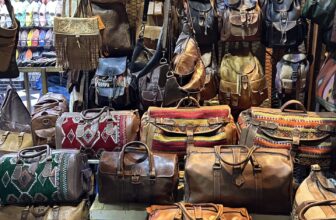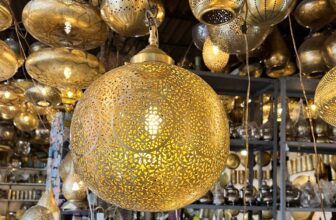Moroccan Craftsmanship: A Tapestry of Tradition, Artistry, and Heritage

Introduction
Within the intricate labyrinth of Morocco’s history and culture, a vibrant tapestry of craftsmanship unfolds—a story woven with threads of tradition, artistry, and heritage. From the animated souks of Marrakech to the artisan workshops of Fes, Morocco’s diverse artisans craft an array of exquisite treasures. This comprehensive exploration unveils the world of Moroccan craftsmanship, delving into its historical significance, the diversity of traditional arts, and the enduring legacy of skilled artisans. We’ll traverse the spectrum of Moroccan artisanal crafts, from intricate tilework to the renowned leather goods, ceramics, and the iconic rugs that adorn homes around the globe.
Historical Tapestry
The roots of Moroccan craftsmanship delve deep into a history shaped by Arab, Berber, and Andalusian influences. The melding of these distinct cultural threads has birthed a unique artistic identity, reflecting Morocco’s rich historical encounters.
The intricate geometrical patterns, vibrant colors, and meticulous details seen in Moroccan handicrafts are a testament to these diverse cultural influences. Arab contributions bring forth Islamic geometric designs, Berber traditions infuse earthy tones and nature-inspired symbols, while Andalusian craftsmanship contributes to the development of intricate tilework and architectural ornamentation.
Traditional Arts and Crafts
- Zellige Tilework: The heart of Moroccan architecture beats with the ancient art of Zellige, a mosaic tilework gracing palaces, mosques, and public spaces. Crafted from individually chiseled and colored tiles, Zellige patterns create mesmerizing geometric designs. The meticulous process requires precision and skill to bring these intricate patterns to life.
- Handwoven Textiles: Weaving, a cornerstone of Moroccan tradition, finds diverse expressions. From the woolen carpets of the Atlas Mountains to the vibrant fabrics in the souks, each piece narrates a unique story. Berber tribes, renowned for their handwoven textiles, produce carpets and fabrics adorned with symbols carrying cultural significance.
- Metalwork: Moroccan metalworkers, or maâlems, produce functional art. Intricately designed lamps, lanterns, and trays showcase mastery in techniques like filigree and engraving. Brass and copper, transformed into delicate patterns, speak to the country’s metallurgical expertise.
- Ceramics: Fes, a hub of ceramic craftsmanship, stands as a testament to Morocco’s artistic heritage. The distinctive blue and white pottery, often adorned with traditional motifs, is a hallmark of Moroccan ceramics. Artisans skillfully mold, paint, and glaze each piece, preserving a craft handed down through generations.
- Leather Goods: The tanneries of Fes and Marrakech are renowned for producing high-quality leather goods. From intricately designed bags to traditional slippers known as babouches, Moroccan leather craftsmanship is celebrated for its quality and artistry. The tanning process, using natural dyes and techniques, is an art form passed down through families.
- Rug Weaving: Among the most iconic expressions of Moroccan craftsmanship are the intricately woven rugs. Berber rugs, known for vivid colors and geometric patterns, are handmade by skilled artisans using traditional techniques. Each rug tells a unique story, often influenced by the weaver’s personal experiences and cultural background.
- Woodwork: Moroccan woodwork, adorned with delicate carvings and intricate designs, is another jewel in the artisanal crown. From ornate doors to intricately crafted furniture, skilled woodworkers create pieces that combine functionality with aesthetic beauty.
- Mosaics: The art of mosaic, much like Zellige, is a prominent feature in Moroccan craftsmanship. Mosaic tables, fountains, and decorative pieces showcase the meticulous arrangement of colorful tiles into stunning patterns, adding a touch of elegance to both interior and exterior spaces.
Enduring Legacy
Moroccan craftsmanship is not a relic but a dynamic force shaping the cultural identity of the nation. The medinas echo with the sounds of artisans at work, creating pieces that seamlessly blend tradition with modern sensibilities.
While the world around them changes, Moroccan artisans strive to preserve their cultural heritage. Initiatives supporting traditional craftsmanship and promoting fair trade practices play a pivotal role in ensuring the transmission of these age-old skills to future generations.
In a globalized marketplace dominated by mass-produced items, Moroccan craftsmanship stands as a beacon of authenticity. Each piece, meticulously crafted by skilled hands, carries the weight of tradition and the individuality of the artisan. Supporting Moroccan craftsmanship is not merely acquiring a product; it is becoming a custodian of a heritage that spans centuries—a heritage that continues to evolve while staying true to its roots. In the intricate craftsmanship of Morocco, the soul of a nation is delicately woven, inviting the world to partake in its beauty and significance.






